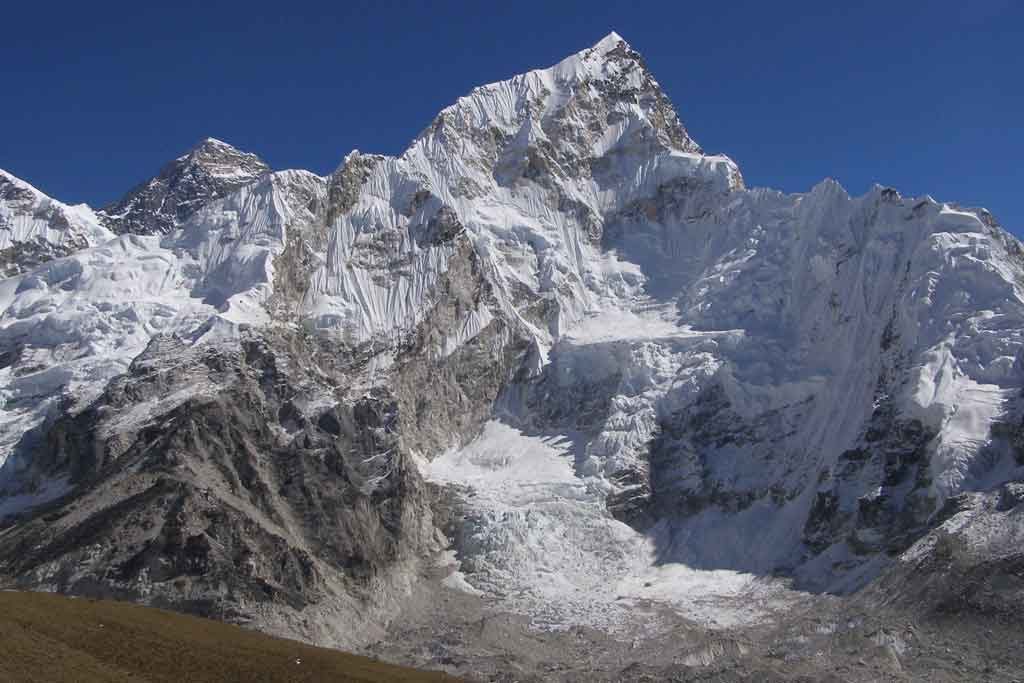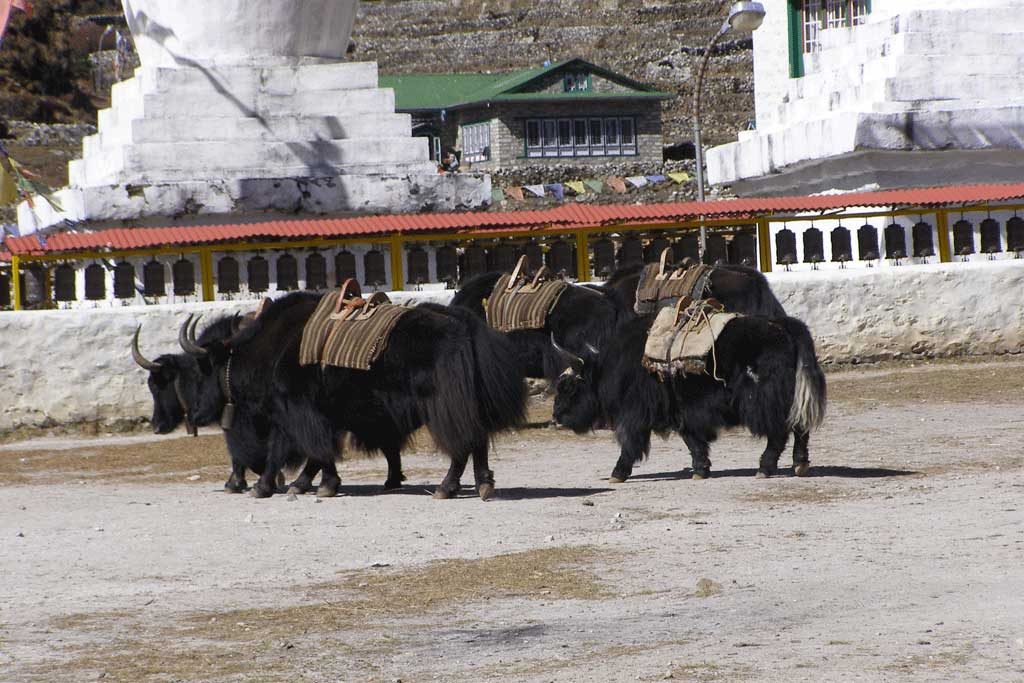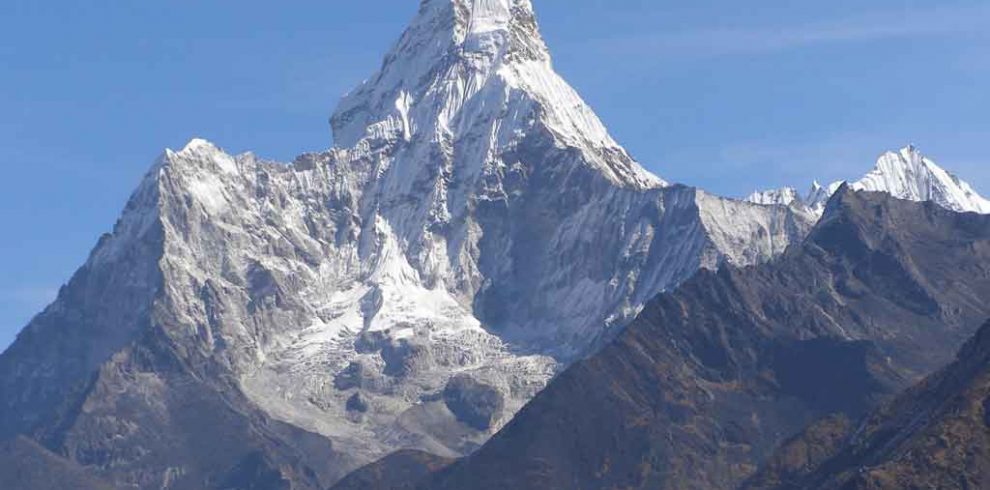Jiri lies at an altitude of 1,905 meters and it is the traditional starting point of the world famous Everest Base Camp trek. Therefore, Everest classic trek from Jiri refers to as the ideal route of the legendary mountaineers – Sir Edmund Hillary and Tenzing Norgay Sherpa. Regular bus service is available from Kathmandu everyday.
The district covered in this trek is known as Solu-Khumbu, the lower part being the Solu region and the upper section the Khumbu region. Mount Everest is in the latter part and is within the Sagarmatha National Park – Sagarmatha being the Nepalese name for Mount Everest – which is also a World Heritage Site.
Brief Itinerary:
| Day | Route | Altitude | Duration |
|---|---|---|---|
| 01 | Drive Kathmandu to Jiri | 1,955m/6,414ft | Drive: 7-8 hrs |
| 02 | Trek Jiri to Bhandar | 2,190m/7,185ft | Trek: 6-7 hrs |
| 03 | Trek Bhandar to Sete | 2,575m/8,448ft | Trek: 4-5 hrs |
| 04 | Trek Sete to Junbesi | 2,680m/8,733ft | Trek: 6-7 hrs |
| 05 | Trek Junbesi to Nunthala | 2,330m/7,644ft | Trek: 6-7 hrs |
| 06 | Trek Nunthala to Bupsadanda | 2,300m/7,546ft | Trek: 6-7 hrs |
| 07 | Trek Bupsadanda to Surke | 2,290m/7,513ft | Trek: 3-4 hrs |
| 08 | Trek Surke to Phakding | 2,610m/8,568ft | Trek: 3-4 hrs |
| 09 | Trek Phakding to Namche Bazaar | 3,446m/11,306ft | Trek: 5-6 hrs |
| 10 | Rest for acclimatisation in Namche Bazaar | 3,446m/11,306ft | Free time |
| 11 | Trek Namche Bazaar to Tengboche | 3,867m/12,687ft | Trek: 4-5 hrs |
| 12 | Trek Tengboche to Dingboche | 4,410m/14,469ft | Trek: 5-6 hrs |
| 13 | Rest for acclimatisation in Dingboche | 4,410m/14,469ft | Free time |
| 14 | Trek Dingboche to Lobuche | 4,910m/16,109ft | Trek: 4-5 hrs |
| 15 | Trek to Everest Base Camp, return trek to Gorakshep | 5,364m/17,598ft | Trek: 7-8 hrs |
| 16 | Trek/Climb to Kalapatthar and trek down to Pheriche | 5,545m/18,192ft | Trek: 7-8 hrs |
| 17 | Trek Pheriche to Namche Bazaar | 3,446m/11,306ft | Trek: 5-6 hrs |
| 18 | Return trek Namche Bazaar to Lukla | 2,840m/9,318ft | Trek: 6-7 hrs |
| 19 | Fly Lukla to Kathmandu | 1,350m/4,430ft | 35 minutes |
The Jiri to Base Camp of Mount Everest also refers to as the “classic route to Everest”. This famous trail lies in the Sagarmatha National Park; protected area in the Himalayas of eastern Nepal containing the southern half of Mount Everest. All early Everest expeditions used to start through Jiri. So, Jiri also serves as the “Gateway to Mt. Everest”.
This classic trek from Jiri will join the other popular trek to the Everest Base Camp at Lukla or Phakding. Likewise, you will trek to Namche Bazaar, visit popular Khumjung Sherpa village and spend some time at the Tengboche Monastery. The Sherpas form the majority of the Khumbu region population and are the area’s basic ethnic group.
Finally, from Gorakshep, you will ascend to the Everest Base Camp and Kalapatthar. Kalapatthar offers the unbelievable Himalayan Panorama for lifetime. Stunning views of Mt Everest and the spectacular Khumbu ice fall adjacent to Everest Base Camp are the unmatched achievement of this trek.
Why Trek to Everest Base Camp from Jiri?
The classic Everest Base Camp trek starting via Jiri is equally popular and regularly used by trekkers for its great countryside and beautiful landscapes. Other reasons include the raging rivers, less busy trail and most importantly to have the opportunity of more gradual acclimatization.
Trekking Encounters offers a customized itinerary as per our trekkers’ holiday schedule and committed for quality services to their expectations. We also offer an alternative itinerary to Everest Base Camp from Lukla for those who are looking for short Everest Base Camp trek.
There are many options available to extend the trip once you reach at Namche Bazaar. An extension trek through Renjola pass, Gokyo Lake, Gokyo Ri and Chola pass can be a bonus side trip. Peak climbing, not to mention is the next challenge for more adventurous trekkers.
How hard is Everest Base Camp Classic Trek?
Everest Classic trek from Jiri is medium-hard trek. The gradual ascent of the trek is a benefit to the trekkers for great acclimatization. Trekkers are required to walk at least 5-6 hours each day. Regular exercising and jogging for some weeks prior to the trip is recommended in order to enhance your strength and stability. If you have any previous Himalaya trekking experience, that would be an additional asset to bid the difficulty.
Best time for Classic Everest Base Camp Trek
The best time for Everest region trekking is during March to May and September to November. Other months are average season for trekking from Jiri to Everest Base Camp. Winters are very cold in the higher elevations and summers are rainy, wet and flooding in the lower regions.
April and early May is a blooming season and the hills are covered with the rhododendron flowers. The monsoons are the nature’s gift to clear the pollution and dust from the atmosphere and offer stunning mountain panorama. Proper trekking gears are necessary for this trek. List of Equipment
Change of Itinerary
The information given on this page is a guide and standard template of what we provide. However, our trips can be customized at your request where possible. So, it may be necessary to make some changes as a result of motorable road Jiri onwards. The roads are not very busy though. This is for your kind note that the scenery is the same and our guides will try their best to escape the roads.
Overview
- Opportunity to follow Hillary and Tenzing’s footsteps through the traditional route
- Enchanting Tengboche monastery
- Magnificent views of Mt. Everest, Cho Oyu and Lhotse
- Amazing view of the Khumbu Ice-fall
- Scenic mountain flight from Lukla to Kathmandu
- The gateway of Everest Base Camp and Sherpa hometown, Namche Bazaar
- The great countryside, terrace farming, beautiful landscapes, rivers and streams











